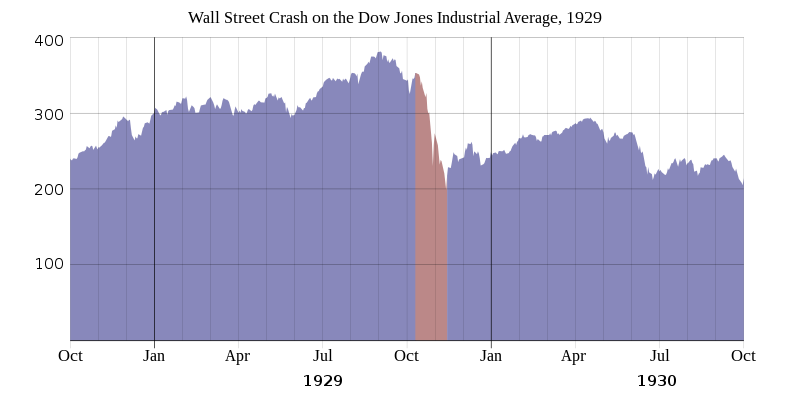
Friday, November 18, 2016
Stock Market Crash Of 1929
The stock market crash of 1929 was the most devastating stock market crash of the United States. The twenties started out as a booming occurrence of wealth and pride. No matter what company was selling stock everyone want a piece of the pie because they thought it was almost certain that they will prosper. The crash did not happen over night though. Throughout a period of time you could see prices, speed of production and construction decrease greatly. Many people had invested in the Dow Jones Industrial but then all of a sudden, their market crashed. This caused many people to panic because they all lost their money. Then other people pulled their money in fear of the same thing happening to them. However, behind the crowded scenes of city life were the farms who thought that they had to produce more food to keep up with this increase of people. This was not the case. In fact, the farms began to over produce their crops which caused a country wide financial issue. Over two days, the market had lost 30 billion dollars. Many wealthy people tried to buy as much stock as possible to stop the dropping price but it would ultimately be unsuccessful because it was too late. One man however, Jesse Livermore sold all of his stock when he started to see DJIA go down. He made $100 Million and had the biggest outcome of all Stock Market history. This just goes to show that timing is everything when it comes to the Stock Market.

Subscribe to:
Post Comments (Atom)
Interesting article about the 1929 stock market crash. It was really tragic, and it really was a shocking change to the liveliness and positivity of the rest of the 1920s. It's important to keep in mind, however, that this drop was only drastic to those that were not already accustomed to a poorer life. People that were not rich enough to enjoy the riches and new ways of life did not see this drop from prosperity to poverty. This included people like farmers and unskilled laborers. For more information on the poorer during the 1920s, go to: http://memory.loc.gov/ammem/coolhtml/ccpres07.html
ReplyDelete